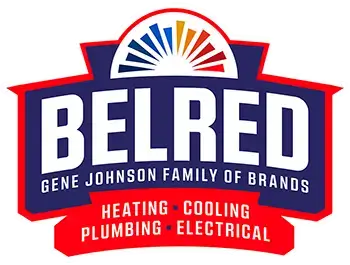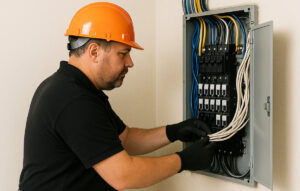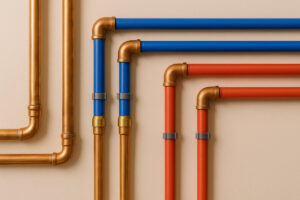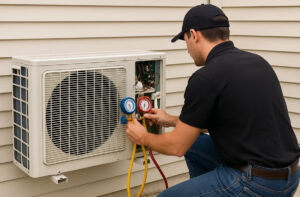Finding the right water heater for your home isn’t just about picking a model off the shelf. It’s about ensuring your family has reliable, efficient hot water for years to come—and doing so in a way that fits your lifestyle, your home, and your budget. At BelRed Heating, Cooling, Plumbing & Electrical, with over 35 years of trusted service in the Pacific Northwest, we’ve helped countless homeowners weigh the choices between traditional tank water heaters and modern tankless systems. Let’s break down what each option offers, so you can feel confident that your next water heater is the right one for your home.
The Comfort of Traditional Tank Water Heaters
Traditional tank water heaters have been the go-to solution for decades—and for good reason. These systems hold a reservoir of heated water, usually between 30 and 50 gallons, storing it in an insulated tank ready for use whenever you need it. The moment you turn on the tap, hot water flows out from the tank, while cold water simultaneously refills the tank to be heated again.
- Upfront Affordability: One of the biggest draws of traditional heaters is their comparatively low initial cost. Hardware typically ranges from $300 to $1,500, with installation often costing an additional $300 to $500. This makes them a smart option for homeowners wanting reliable service without too much upfront investment.
- Simple Maintenance & Repairs: With fewer components, traditional heaters are often easier—and less costly—to maintain and fix. Our skilled technicians routinely provide service that keeps these units running smoothly for years.
- Ready for Heavy Demand: Got a large family or frequent guests? Traditional tanks are well-suited to provide enough hot water for simultaneous showers, laundry, and dishwashing without much slowdown.
That said, these heaters have their quirks. They constantly work to keep water hot, even when you’re not using it, which leads to standby heat loss and higher utility bills. Plus, they generally last 8 to 12 years before replacement becomes necessary. And because of their bulky tanks, they require a fair amount of space—typically 6 to 8 square feet—which can feel limiting if you have a smaller home or want to keep your utility areas uncluttered.
Why Consider Tankless Water Heaters?
Also known as on-demand water heaters, tankless systems deliver hot water only as you need it rather than storing it. When you open a faucet, water passes through a heating element powered by electricity or gas and is warmed right then and there.
- Energy Savings You Can See: By heating water only when required, tankless units avoid standby energy loss altogether. For an average household using up to 41 gallons per day, this can translate to energy savings between 24% and 34%. That’s good news for your wallet and the environment.
- Space-Smart: Their compact form factor and wall-mounted design free up valuable floor space, opening possibilities for installation in spots where conventional tanks simply wouldn’t fit.
- Built to Last: With proper care, these units often serve homeowners 20 to 25 years—double the lifespan of most traditional heaters. This longevity helps offset the higher upfront costs.
On the flip side, tankless water heaters come with steeper initial costs. Expect to pay between $1,000 and $3,000 for the unit, and installation can be $1,000 or more due to potential upgrades to gas lines, venting, or electrical systems. Furthermore, their flow rates can limit performance during peak demands; for example, multiple simultaneous showers might tax their capacity. Our team can help assess your household’s hot water needs to determine if a tankless system is a fit.
Understanding Your Investment: Cost Breakdown
When it comes to cost, it’s important to consider the total cost of ownership, not just the initial price tag.
- Traditional Tanks: Purchase and installation combined generally come in under $2,000. Great for budgets that prioritize upfront affordability and straightforward setup.
- Tankless Systems: Can push $4,000 or more after installation, depending on necessary modifications and unit size. They are often more attractive when factoring in long-term energy savings and lifespan.
At BelRed, we believe in transparency. That’s why we offer personalized consultations, taking your budget and home configuration into careful consideration to recommend solutions that deliver true value—not just the lowest price.
Energy Efficiency and Your Monthly Bills
Energy efficiency isn’t just a buzzword—it’s a real-world factor affecting your comfort and monthly expenses.
Traditional heaters keep water hot around the clock, meaning energy is used even when the hot water isn’t flowing. This standby heat loss can add up, especially in colder months when heat loss is amplified.
On-demand tankless systems heat only what you use—and when you use it. This precision means less wasted energy. The Department of Energy reports potential savings of nearly 30% on water heating energy costs compared to traditional systems. Beyond bills, switching to tankless reduces your carbon footprint, making a positive impact on our environment here in the Pacific Northwest and beyond.
Lifespan, Durability, and Maintenance: What to Expect
Your water heater is an investment, so understanding how long it will last and what upkeep it requires can guide your decision.
Traditional units generally last 8 to 12 years. Sediment buildup from minerals in water is common and calls for periodic flushing. Additionally, checking and replacing the anode rod—the sacrificial metal rod inside the tank—helps prevent corrosion and extends life.
Tankless water heaters can keep going strong for 20 to 25 years. These systems do require regular descaling, especially in areas with hard water, to prevent mineral buildup inside the unit. This maintenance is essential for preserving efficiency and reliability. While tech-savvy, many homeowners choose to combine this with their annual plumbing inspections, something we readily assist with.
Space Matters: Optimizing Your Home’s Layout
The size and placement of your water heater often influence day-to-day comfort and home organization.
Traditional tanks need space—not just for the unit itself but also for clearance around it to comply with safety regulations and allow service access. Small homes or apartments might struggle to accommodate them without sacrificing usable area.
Tankless water heaters, by comparison, mount easily on a wall and can tuck away out of sight in closets, laundry rooms, or utility areas. This can open up your home for other uses and help maintain a tidier aesthetic.
What Fits Your Home? Let’s Find Out Together
Choosing between tankless and traditional water heaters isn’t just about specs or price; it’s about matching technology to your lifestyle and home. At BelRed Heating, Cooling, Plumbing & Electrical, we understand that every home is unique. Whether you’re updating an aging water heater or building new, our team offers expert guidance—helping you weigh upfront costs, utility savings, maintenance, space, and environmental impact to find the best fit.
With licensed, insured plumbers and a commitment to customer-first service, we make the process straightforward and reliable. If hot water comfort means as much to you as it does to us, let’s talk about an upgrade tailored to your needs.
Ready to explore your options? Click the “Book Now” button to schedule your consultation with BelRed experts today, or reach out through our contact page. Experience the comfort, efficiency, and peace of mind that comes from choosing the right water heater—backed by professionals you can trust.







